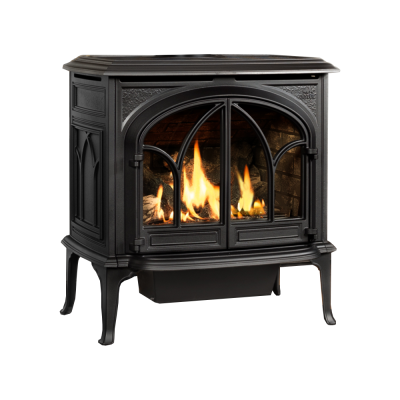Helpful Facts
Helpful Advice about Rope Gaskets
A rope gasket creates a seal around the door preventing air from slipping in and increasing the burn quality of the hearth appliance. These will go bad over time due to age and general wear. A simple way to test if your gasket is beginning to fail is by testing it with a dollar bill test. Do this on a cold stove, slip the bill halfway in and close the door. With the money inserted gently pull the dollar bill out; if there is little to no resistance, your gaskets are failing. Another way to check is by starting up your fireplace and checking for soot building on a section of the glass; this will also show if the gasket is leaking.
If you find that you do need to replace your gasket, we stock various rope gaskets. Visit our showroom we can assist you in selecting the correct rope lengths; please have the brand and model of your unit on hand. If you are not sure which brand or model you have, bring in a piece of the rope, we will match it for you.
We offer a gasket replacement service upon inspection of the door. Contact us for more information.
When Choosing the Best Fire Feature for Your Home or Business
At Byler’s Stove Shoppe we are interested in providing products that best suit the specific needs of our customers. A few questions will help determine what will best suit your style. Our Installers are trained to the highest standards in the industry (NFI) to ensure customer safety and satisfaction. We take very seriously the fact that we are putting fire in your home and that you require a safe, professional installation.
Most residential heating/HVAC systems are connected to duct work that is room to room which heats/cools the entire home. Modern Heat Pumps are very efficient sources of heat; however, in extremely cold temperatures, their ability to heat is diminished. One answer to this problem is a supplemental heat source like wood, pellet, or gas. Freestanding stoves and built-in fireplaces and inserts are considered “zone” heaters, not primary heat sources. How much of the home they will heat depends on the rated output of the unit, open or closed floor plan, single story or 2 story, ceiling height, quality of insulation, efficiency of windows/doors, and location of stove/fireplace. Even beyond the heating of a stove or fireplace, it creates an inviting place for family and friends to gather.
A few questions that will help steer you in a direction…
I am concerned about heat during a power outage? Pellet Stoves require electricity. (pellet stoves will operate on a small portable generator.) Wood stoves and gas stoves/fireplaces are great options. Our gas fireplaces and stoves will heat during a power failure.
Are convenience of operation and lower maintenance the main concerns? Gas units will fit the bill. Our units are mid to upper level units that can be coupled with fully functional remotes.
Economy of operation? This depends on the market fluctuation of fossil fuels. If you have access to good dry firewood and don’t mind the physical labor involved, this is a great option. Pellet stoves would be another consideration if you are committed to maintaining the unit. Pellet stoves are a great option but require higher maintenance than wood stoves.
Frequency of operation? Is the unit more for ambiance and decor than for heat?
Byler’s Stove Shoppe sales associates are trained to help you determine what is best for your specific needs. Schedule your consultation today!














